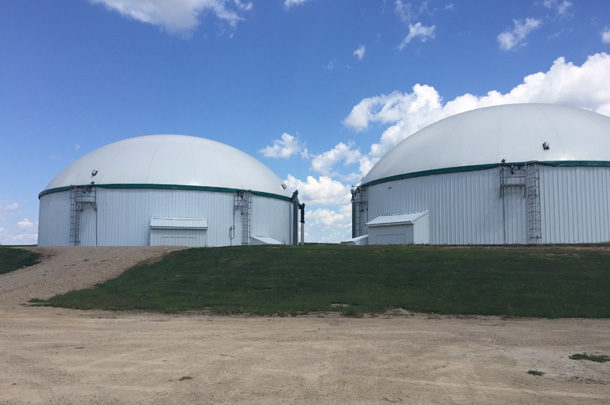Investors of all backgrounds have been touring dairy farms in the U.S. about RNG projects. I’ve heard stories with comments being made such as, “all your nutrient challenges will be gone,” to “we’ll pay you big money for your manure,” to “let’s be in partnership in this project.”
As a former owner of digester facilities, here’s what I can tell you – each project is a unicorn. How you bed your cows, frequency and method of manure spreading, and other aspects are just the tip of the iceberg of how farm practices impact the financial outcome of RNG projects.
Incorrect assumptions of owners/investors:
- The stuff coming out the back end is worth money
- Operations and management can be done with a few people
- It’s predictable
- This is a pot of gold at the end of a rainbow
Let’s dig a little deeper on each of these points.
The stuff coming out the back end is worth money
The effluent does have nutrient value, and it is carbon based. If separated, the liquid is easy enough to apply. The solids are commonly used as animal bedding, the base for compost or spread on fields. Additional cost factors come in with the solid not being an easy form to spread on fields. Also, a watershed may require the removal of solids, and that can be an added cost both for transportation and negatively impacting the project’s carbon intensity (CI) score.
Operations and management can be done with a few people
These facilities require people with specific knowledge. At first glance, the facilities are comprised of pipes, pumps and poop. But there are by-products generated from manure –hydrogen sulfide and ammonia. Those two gasses deliver quite a punch to the equipment.
It is predictable
The aforementioned hydrogen sulfide and ammonia will humble even the best maintenance plan. Additionally, if manure is piped underground, it will require regular jetting due to buildup.
This is a pot of gold at the end of a rainbow
RNG projects can be attractive financially, thanks to the Low Carbon Fuel Standard (LCFS) in California and Renewable Identification Numbers (RINs) at the federal level. Many factors can influence the actual income, primarily based on the CI score of a project, like mentioned earlier with farming practices and trucking costs. Historically, costs for maintenance have been underestimated. Equipment will break and spare parts will be needed to keep projects running smoothly. Remember, if you’re not producing gas, you’re not making money.
Most large farming operations have already or are actively considering a biogas facility. Currently, the larger the number of cows, the better a project will pencil out. There’s still plenty of opportunities for medium to smaller size farms to create a cluster project. These will depend on proximity to a pipeline.
Being mindful of these common misconceptions will put your team on the right track to a successful project. For Wisconsin farm operations, a legislative effort is underway to increase access to the pipeline, therefore making projects more accessible. Click here to learn more about this.
This series is brought to you by the Dairy Business Association on behalf of the Dairy Strong conference, Jan. 18-19, 2023. This event focuses on cutting-edge technology, cultural trends and the future of the dairy community. Learn more about Dairy Strong here.
Jessica Niekrasz
- Principal
- Clean Fuel Connects
- Email Jessica Niekrasz




.jpg?t=1687979285&width=640)


